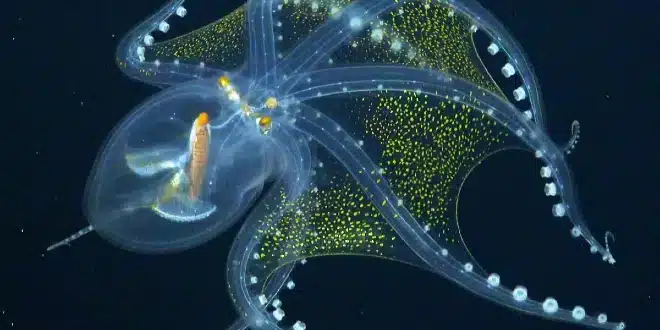The enigmatic and lesser-known world of the oceans has long intrigued scientists. Recently, a newly discovered array of seldom-seen, alien-like species residing on the seafloor has left researchers astounded.
Marine scientists exploring the Clarion-Clipperton Zone (CCZ) in the Pacific Ocean, located between Mexico and Hawaii, uncovered marine animals previously unknown to science. These creatures inhabit a unique and largely unexplored environment, shrouded in the perpetual darkness of the abyssopelagic zone.
“These areas are among the Earth’s least explored,” said Thomas Dahlgren, a marine ecologist at the University of Gothenburg in Sweden, as reported by Science Alert. “It’s estimated that only one out of ten animal species living down here has been described by science.” He added that the opportunity to discover new species and ecosystems in such a manner is reminiscent of scientific exploration in the 18th century, making it an exceptionally thrilling endeavor.
The discovery was made possible by the deployment of a remotely operated vehicle (ROV) by the UK National Oceanography Centre’s SMARTEX (Seabed Mining And Resilience To EXperimental impact) mission, which descended to depths of 3,500 to 5,500 meters (11,480 to 18,045 feet) in the CCZ.
One of the most notable discoveries was a transparent sea cucumber, affectionately dubbed ‘unicumber,’ belonging to the Elpidiidae family. Dahlgren explained that these sea cucumbers, some of the largest animals found on the expedition, act as vacuum cleaners for the ocean floor, specializing in sifting through sediment that has passed through the least number of digestive systems.
Other fascinating creatures found included a delicate glass sponge, a cup-shaped filter feeder, a tanaid crustacean, sea stars, corals, anemones, and a striking Barbie-pink sea pig.
The team explored regions of the CCZ designated for deep-sea mining, which poses a significant threat to these unique marine habitats. “The lack of food causes individuals to live far apart, but the species richness in the area is surprisingly high. We see many exciting specialized adaptations among the animals in these areas,” Dahlgren noted.
Dahlgren emphasized the need for further understanding of this environment to protect the species residing there. Currently, 30 percent of the marine areas under consideration for deep-sea mining are protected, but it remains uncertain whether this is sufficient to prevent these species from facing extinction.
This discovery underscores the importance of continued exploration and conservation efforts in the deep-sea ecosystems, as these environments hold countless mysteries and potential new species waiting to be uncovered.


